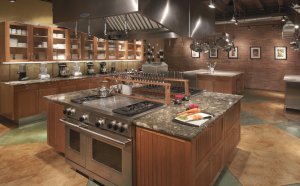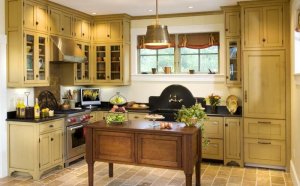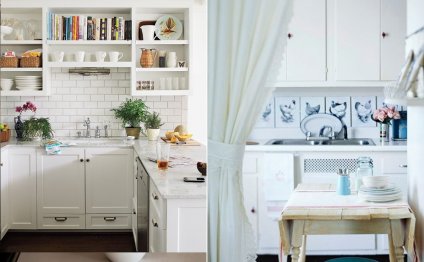
Small Cottage kitchen Design
 An efficent commercial kitchen requires careful planning.
An efficent commercial kitchen requires careful planning.
Todd Warnock/Lifesize/Getty Images
A well-designed commercial kitchen is integral to efficient, safe and profitable food preparation. A commercial kitchen designed to consider ergonomics will be appreciated by the owner, chef and kitchen workers. The fewer steps required to complete a task, the better. Careful, considered planning in the design of the kitchen will save money and time during the construction phase and increase profitability over the life of the kitchen. Commercial kitchen design plans are dictated by space requirements, equipment and budget.
Step 1
Prepare a detailed list or menu of all foods you plan to prepare in the commercial kitchen. Describe in detail the method of food storage and preparation. This is one of the most important steps in planning a commercial kitchen and should be done prior to choosing space or equipment. You do not know what kind of equipment you will need until you have decided on the foods you will prepare. Include all menu items you may wish to add in the future. (A small commercial kitchen approved as a bakery or sandwich shop may not meet health code requirements if you later wish to add soups, salads, deep-fried items or pizza.) Careful planning will avoid costly changes in equipment or construction.
Step 2
Make a complete list (including detailed measurements) of all equipment you will require for food preparation, refrigeration, display and storage. Every single item of equipment must meet commercial health code requirements. Determine if you will require a walk-in refrigeration unit or free-standing cold storage equipment. The size and amount of equipment, plus food preparation counter surface, will dictate the amount of space needed in your commercial kitchen.
Step 3
Select a site location for your small commercial kitchen. Determine if you will construct a new building or remodel an existing commercial space. Contact your local zoning commission to determine if your new business venture complies with zoning restrictions.
Step 4
Take exact measurements of the size of the space if you are remodeling an existing building.. Make note of existing windows, doorways, electrical outlets, plumbing lines and floor drains. Make a sketch of the existing space, making note of the present flooring material, wall and ceiling surface and all heating, exhaust or air-conditioning vents. For a new building, draw out a rough sketch of the dimensions and special features of proposed construction.
Step 5
Plan how you will use the space in your commercial kitchen. Ergonomics is the number one consideration in the design of kitchen space. Commercial kitchens should be designed for maximum labor efficiency, safety and functionality. Make sure that there is plenty of room to move about freely when carrying hot pots and bulky supplies. If employees do not have to waste time and extra movement completing a task, efficiency is increased and fatigue and workplace injuries are reduced.
Step 6
Contact your local city or state building inspector and make an appointment to review your preliminary plans. Health and fire codes must be met. The space may need to be remodeled to satisfy requirements. Regulations govern how far a food preparation area must be away from any sinks or waste and disposal drains, the installation of vents and grease traps, the size and temperature capacity of hot water tanks and the design and location of food storage areas. Make sure you receive a printed copy of all rules and regulations prior to designing the commercial kitchen space. Regulations vary from state to state, dependent on location, the size of the kitchen and the amount of patrons you are allowed to seat in the premises. City or county ordinances may apply.
Step 7
Employ the services of a professional architect or building contractor to design the commercial kitchen, incorporating all building and health department rules that apply. Prior to purchasing equipment or commencing construction or remodeling, the detailed drawings or blueprints must be reviewed and officially approved by both the health department and fire inspector. Blueprints must include electrical wiring schematics, fire suppression equipment installation drawings, emergency and handicap access routes, plumbing and electrical installation plans and a complete list of all building materials.
Things Needed
- Detailed building or remodeling plans
- Menu or food preparation list
- List of kitchen equipment
- List of building materials
Warning
- Review all licenses and permits required for operation of the commercial kitchen. Rules and regulations vary by geographical location. A complete understanding of all the requirements of the health and fire departments can avoid costly changes in building plans or renovations.
RELATED VIDEO
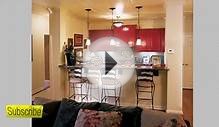

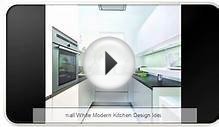
Share this Post
Related posts
Commercial kitchen Design
At HAFSCO, we ve built a reputation as the Executive Chefs’ primary source for creative kitchen solutions. Our team of professionals…
Read MoreModern Victorian kitchen Design
Modern Victorian Kitchen Design | Interior Home Design Ideas
Read More
